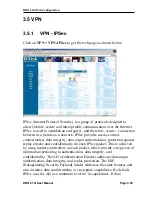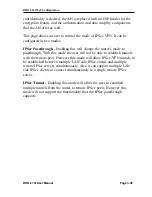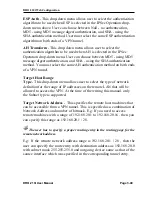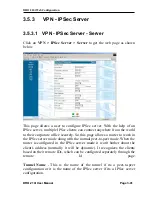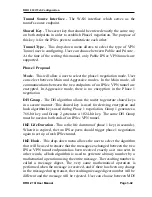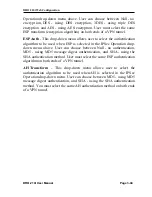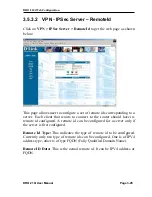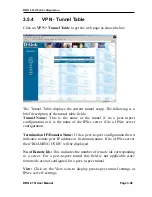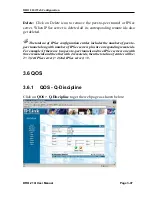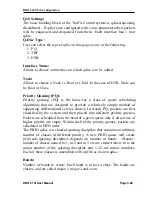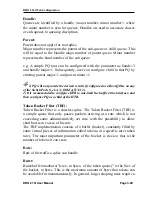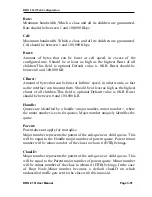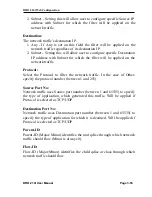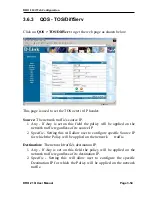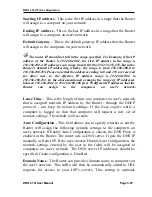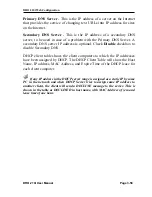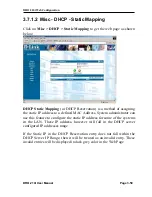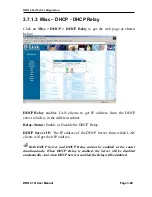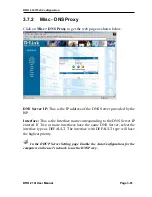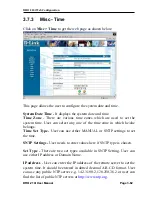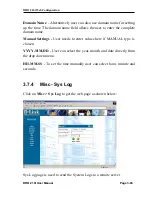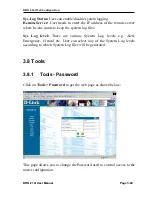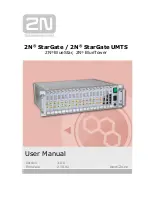
DRO-210i Web Configuration
DRO-210i User Manual Page 3-49
Handle:
Queues are identified by a handle <major number, minor number>, where
the minor number is zero for queues. Handles are used to associate classes
or sub-queues to queuing disciplines.
Parent:
Parent does not apply for root qdisc.
Major number represents the parent of the sub-queue or child queue. This
will be equal to the Handle major number of parent queue. Minor number
represents the band number of the sub queue.
e.g. A simple PQ root can be configured with the parameter as bands=3
and handle major=1. Subsequently, user can configure child to that PQ by
entering parent major=1 and parent minor=1.
1) PQ will not provide the desired results if configured as a Root QDisc on any
of the Switch Ports (i.e LAN, DMZ or WAN2).
2) It is recommended to configure HTB to rate-limit the traffic at the interface, and
then configure PQ as a child of the HTB.
Token Bucket Filter (TBF):
Token Bucket Filter is a classless qdisc. The Token Bucket Filter (TBF) is
a simple queue that only passes packets arriving at a rate which is not
exceeding some administratively set rate, with the possibility to allow
short bursts in excess of his rate.
The TBF implementation consists of a buffer (bucket), constantly filled by
some virtual pieces of information called tokens, at a specific rate (token
rate). The most important parameter of the bucket is its size, that is the
number of tokens it can store.
Rate:
Rate of the traffic a qdisc can handle.
Burst:
Burst/buffer/maxburst "(size -in bytes- of the token queue)" is the Size of
the bucket, in bytes. This is the maximum amount of bytes that tokens can
be available for instantaneously. In general, larger shaping rates require a

